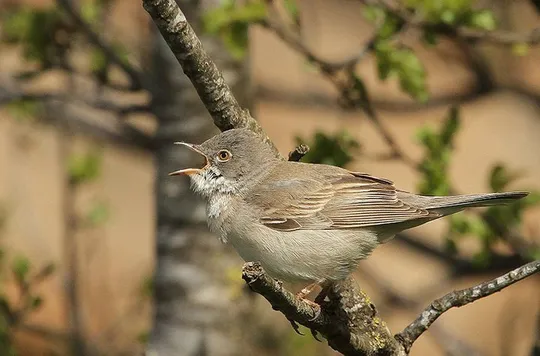Sylvia leucomelaena
 Critically Endangered
Critically Endangered
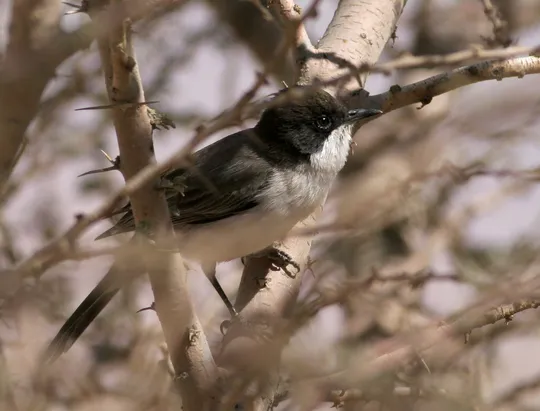
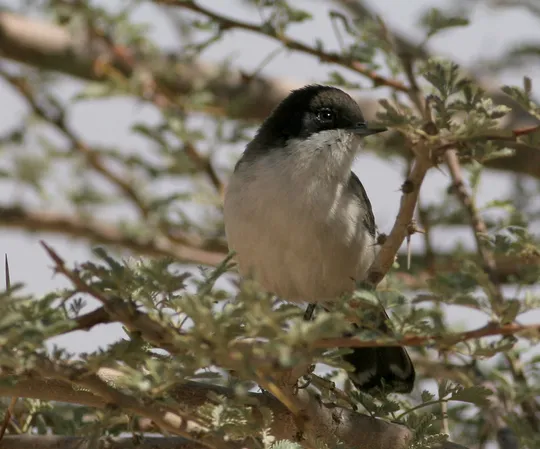
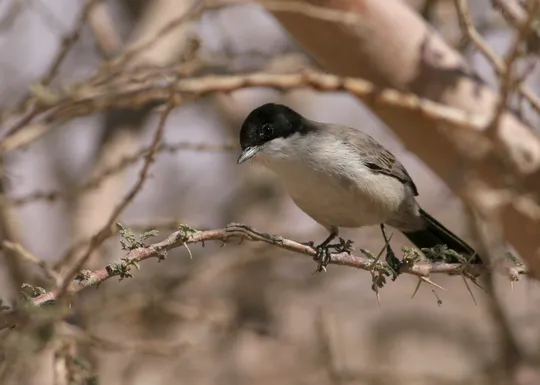
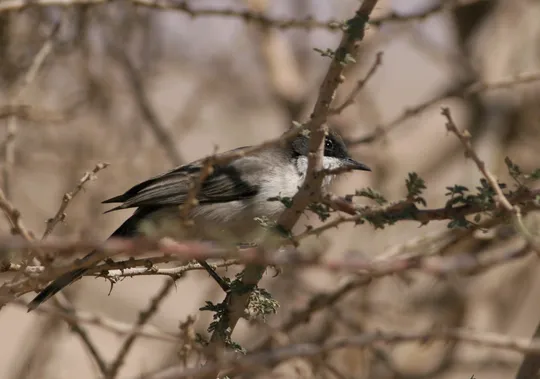
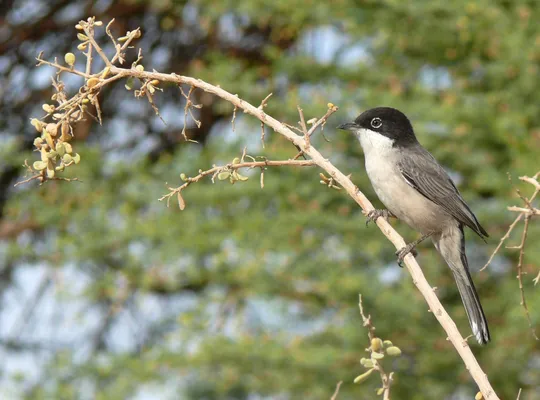
| Habitats | Acaicia Savanna |
|---|---|
| Presence In Israel | Resident |
| Breeding In Israel | Breeder |
| Migration Types | Resident |
| Zoographical Zones | Sudani |
| Landscape Types | Plains & Valleys, Wide Wadis |
| Vegetation Densities | Medium |
| Nest Locations | Tree |
| Diet Types | Invertebrate |
| Foraging Grounds | Trees and Shrubs |
| Body Sizes | Small (up to 500g) |
| Threat Factors | Drynage of Acacia Trees, Habitat loss and fragmentation |
The Arabian Warbler is a rare resident species in the Arava Valley. Until the early 1980s, it was a relatively common resident in all parts of the Arava Valley and occupied all the suitable habitats south of the Dead Sea in the north and down to Ein Evrona near Eilat. The population at the time was estimated at about 120 pairs (Shirihai 1996). During the last two decades, the species suffered a sharp decline in the number of pairs and its range decreased. A general survey along the Arava Valley put the current population at less than 20 pairs (Perlman et al. 2012).
Stands of large, developed acacia trees in the Arava flatlands or at the opening of wadis flowing into the valley.
The range of the Arabian Warbler is limited to small areas on both sides of the Red Sea. The local subspecies S. l. negevensis is endemic to the Arava Valley in Israel and Jordan.
The major threats facing the Arabian Warbler are habitat modification due to drying up of acacias in the Arava Valley, development and land reclamation for agriculture and building, as well as direct disturbance by vehicle and human traffic.
No specific conservation measures have been taken for this species to date.
The Arabian Warbler once nested in acacia stands along the entire Arava Valley. During the past three decades, its population size decreased due to the drying up of acacia trees in the Arava, reduction of natural areas because of agriculture and development, and direct human disturbance. The current breeding population is fragmented and limited to a small number of acacia stands. The population on the Jordanian side of the valley is apparently larger. The population in the Israeli and Jordanian Arava Valley belongs to an endemic subspecies, which is isolated and a few hundred kilometers distant from the nearest population, that breeds in the Arabian Peninsula.
Statutory protection of quality acacia stands against development
Protection of breeding areas from disturbance by hikers and vehicles
- פז, ע. 1986. עופות. מתוך אלון, ע. (עורך), החי והצומח של ארץ ישראל. כרך 6. הוצאת משרד הביטחון, ישראל.
- פרלמן, י., שוחט, א. ולבינגר, ז. 2009. סקר אטלס ציפורים בערבה סיכום שנת 2009. דו"ח מרכז הצפרות של החברה להגנת הטבע.
- Perlman, Y., Shochat, E. and Labinger, Z. 2011. Developing Managment plan for important bird areas in southern Israel. second annual report, Nizzana region and Arava Valley.Israeli Ornithological center, SPNI.
- Shirihai, H., 1996. The Birds of Israel. Academic Press, London.
- Symes, A. 2013. Species generation lengths. Unpublished, BirdLife International.
- Species page at Birdlife International
Current Occupancy Map
| Data Missing | Sporadic | Limited Sites | Low Density | High Density |
|---|---|---|---|---|
| 0 | 0 | 0 | 0 | 0 |
Distribution maps
The maps presented here provide visual information on the distribution of species in Israel from the past and present, and the changes in occupancy and breeding density during the comparison period. For further reading
Relative Abundance 2010-2020
Breeding density values in the current decade as determined from experts' opinion and observations from databases.
| Data Missing | Sporadic | Limited Sites | Low Density | High Density |
|---|---|---|---|---|
| 8 | 12 | 12 | 21 | 19 |
Relative Abundance 1980-1990
Density values based primarily on the book The Birds of Israel (Shirihai 1996).
| Data Missing | Sporadic | Limited Sites | Low Density | High Density |
|---|---|---|---|---|
| 5 | 14 | 14 | 17 | 22 |
Occupancy 1990-2020
The map shows differences in the species breeding distribution between the 1980's breeding map and the current weighted breeding evaluation. Negative value - species previously bred in the grid and is not presently breeding; positive value - species has not previously bred in the grid and is currently breeding.
| Data Missing | No Change | Occupancy Increase | Occupancy Decrease |
|---|---|---|---|
| 6 | 35 | 1 | 9 |
Change in Relative Abundance 1990-2020
The map shows the changes in the relative abundance of a species in each of the distribution grids between the breeding map of the 1980s and the weighted current breeding evaluation. Negative values - decline in abundance; positive values - increase in abundance; zero - no change in abundance.
| 80 to 100 | 50 | 20 to 30 | No Change | 30- to 20- | 50- | 100- to 80- | Data Missing |
|---|---|---|---|---|---|---|---|
| 0 | 4 | 2 | 22 | 12 | 14 | 11 | 16 |
| Rarity | |
|---|---|
| Vulnerability | |
| Attractiveness | |
| Endemism | |
| Red number | |
| Peripherality | |
| IUCN category | |
| Threat Definition according to the red book |
 Contributed:
Contributed: 